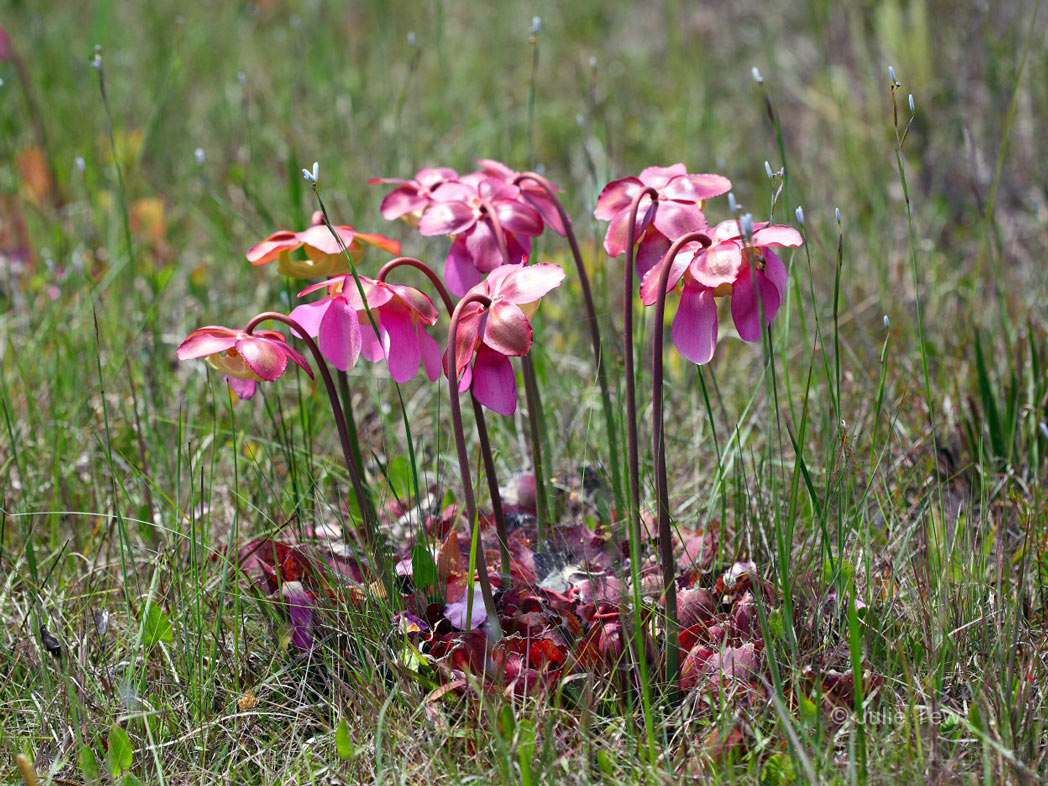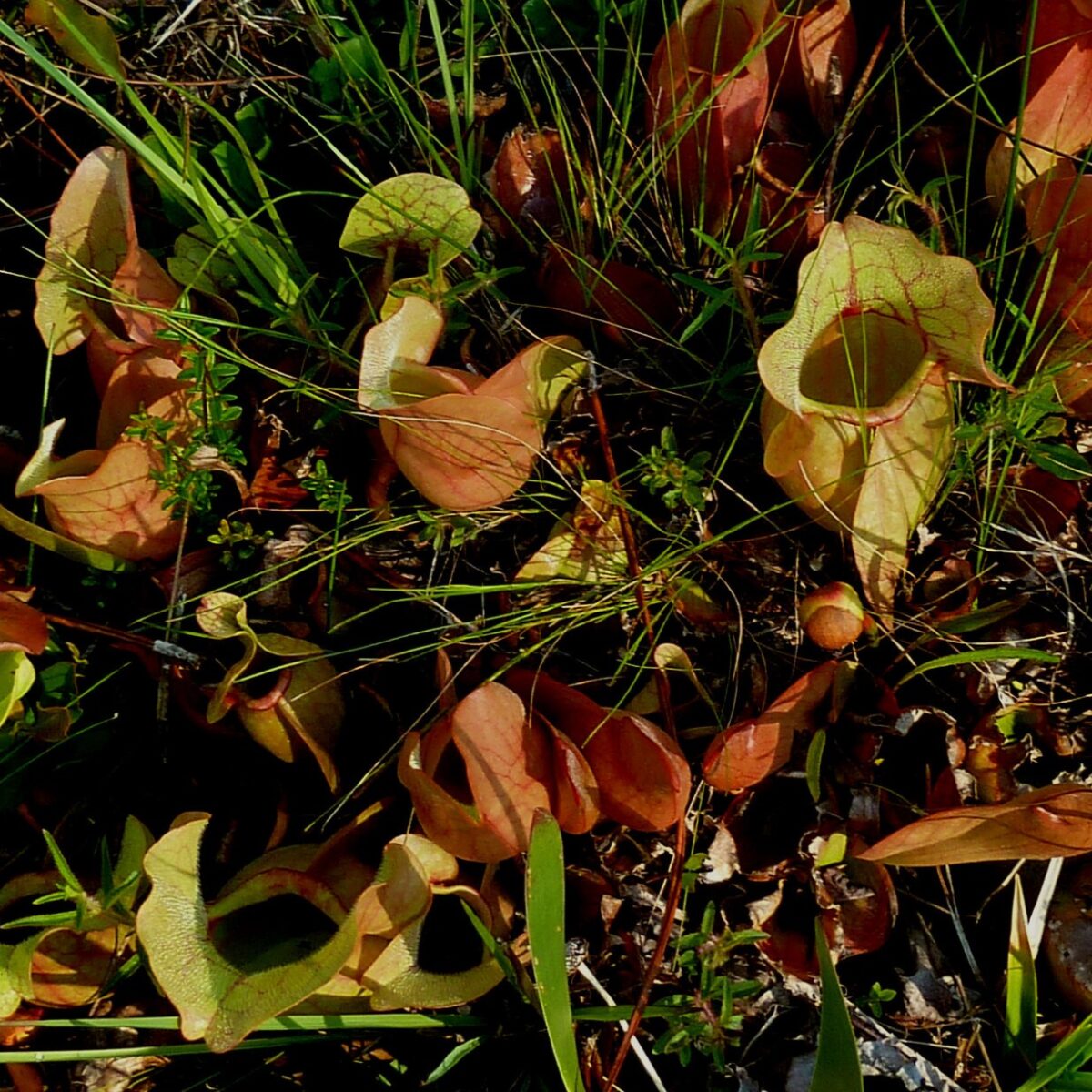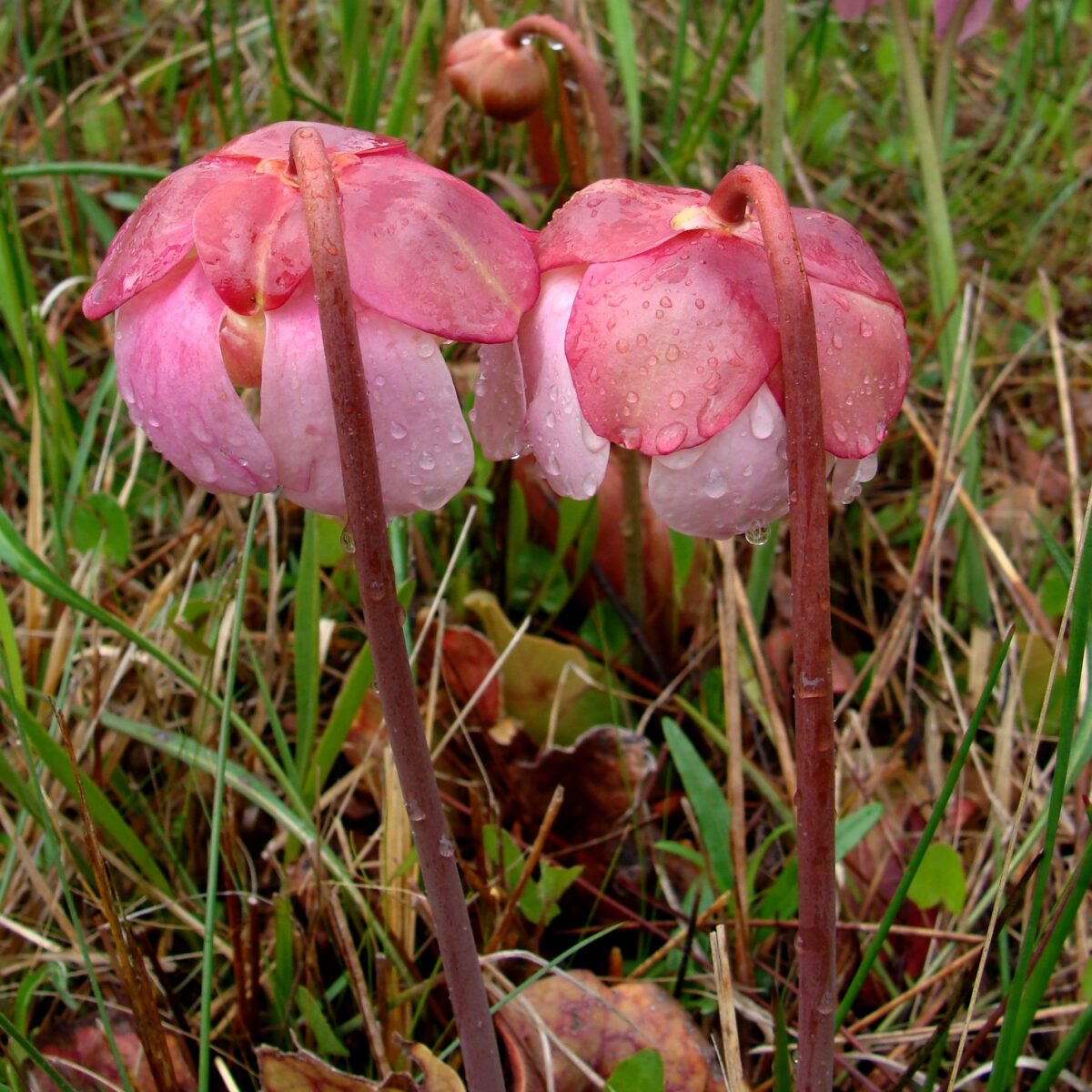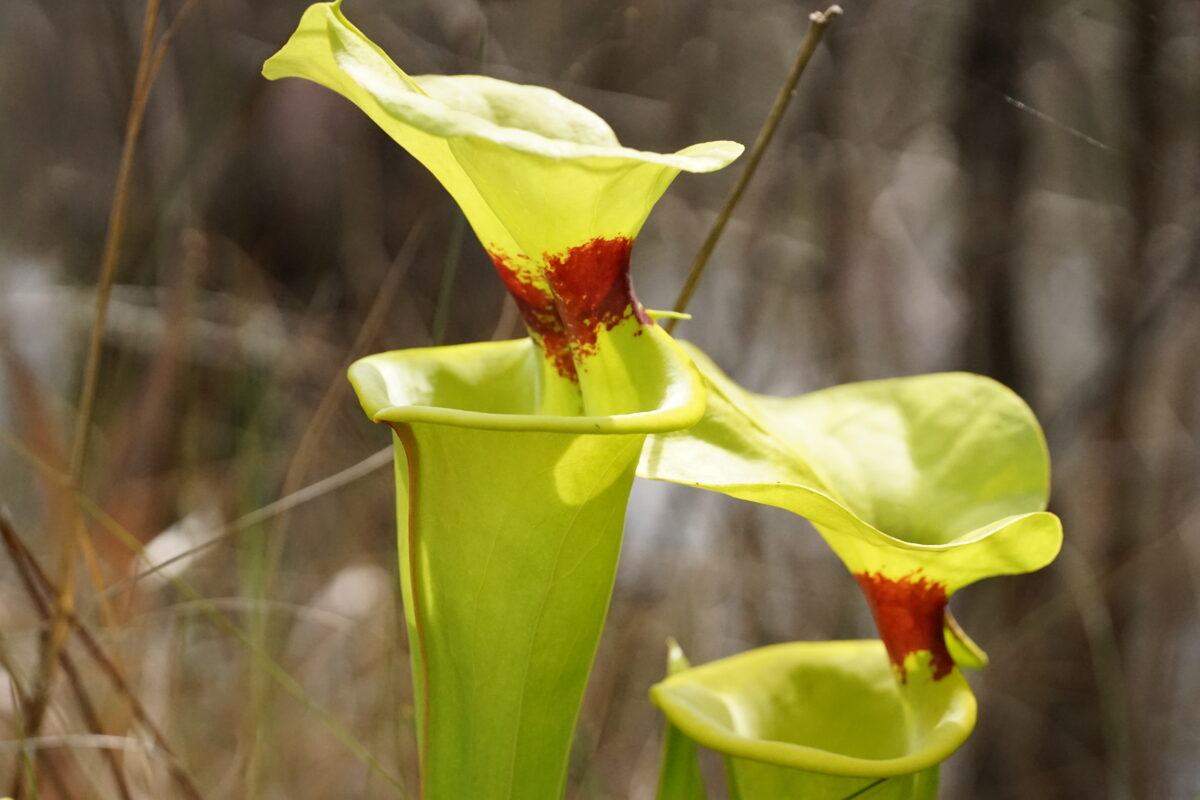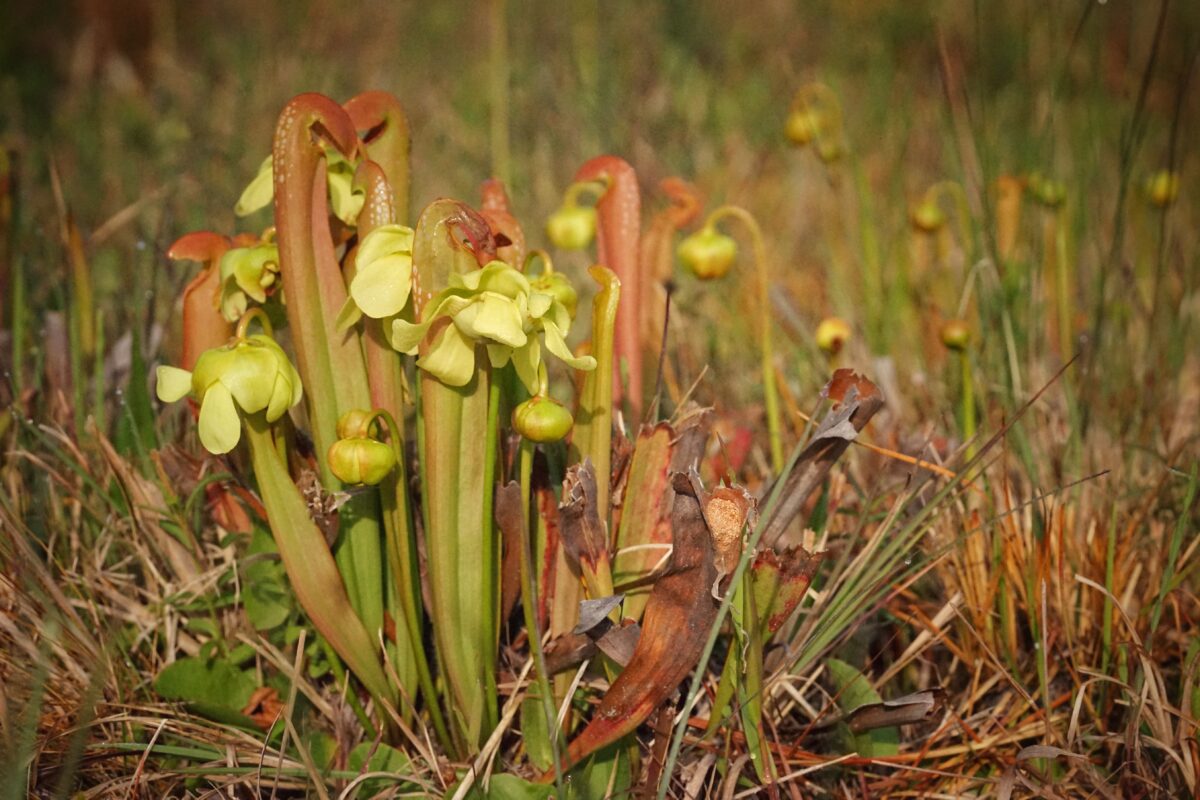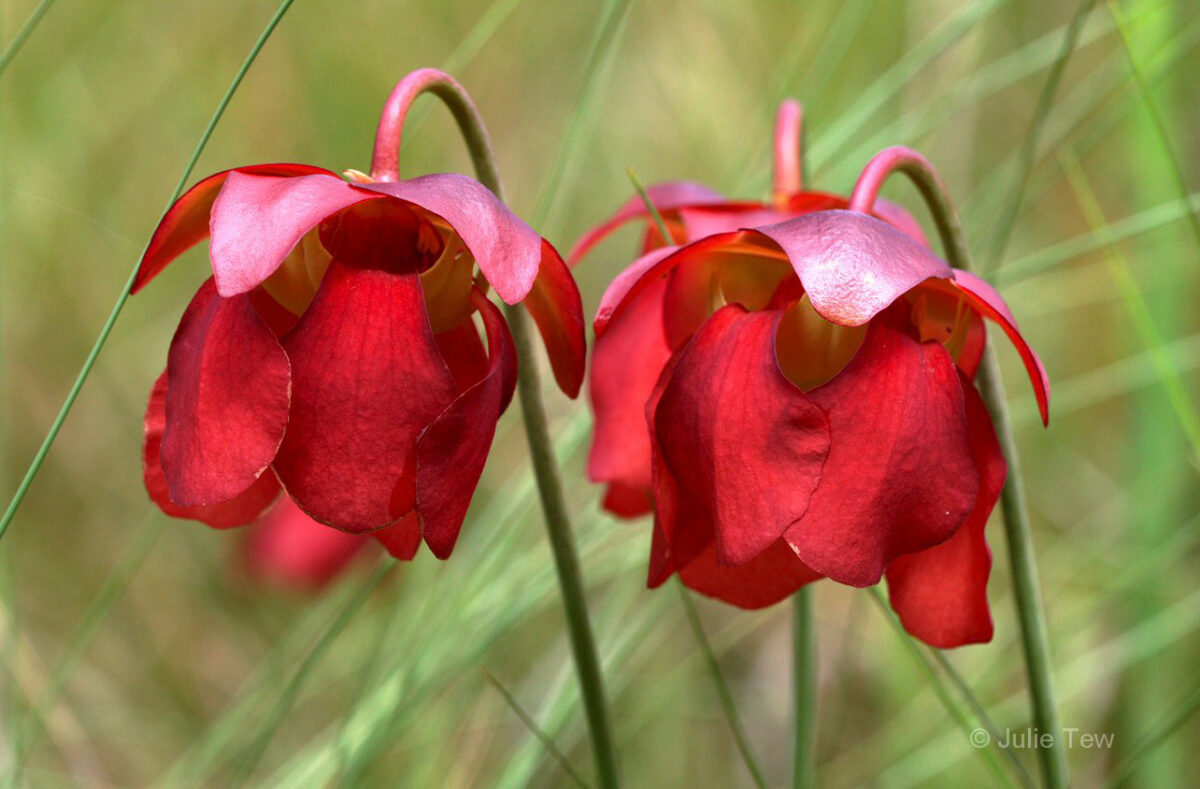Gulf purple pitcherplant
Pictured above: Gulf purple pitcherplant (Sarracenia rosea) by Julie Tew. Click on terms for botanical definitions. View post as a PDF.
Gulf purple pitcherplant is a carnivorous perennial wildflower that blooms in spring. It occurs naturally in wet prairies, seepage slopes and roadside ditches.
The flowers of the Gulf purple pitcherplant are light to dark pink, with five petals and five sepals. They are solitary and nodding. The leaves tend to lie flat on the ground. They are tubular or urn-shaped with exposed, upward-facing mouths that form the “pitcher” where insects become trapped. The upper portion is often inflated. The fruit is a capsule with many seeds.
Gulf purple pitcherplant is a state-listed threatened species. It was originally classified as a variety of purple pitcherplant (Sarracenia purpurea) by American botanist Edgar Wherry, who referred to it as a “mutant” form. In 1999, the case for reclassification was made because of three distinguishing factors noted in populations occurring along the Gulf Coast: Flowers are larger and flower stalks are shorter; petals are pink, not purple, and pitcher structure is different.
The species name rosea refers to the pink or rose-like color of the flower (as opposed to purpurea, which means “purple”).
Family: Sarraceniaceae (Pitcherplant family)
Native range: Gadsden and Liberty counties west into Escambia County.
To see where natural populations of Gulf purple pitcherplant have been vouchered, visit florida.plantatlas.usf.edu.
Lifespan: Perennial
Soil: Inundated to saturated soils; can also grow in periodically flooded habitats
Exposure: Full sun
Growth habit: <1’ tall
Carnivorous plants have very specific habitat requirements and as such are not suited for use in urban native plant gardens. However, many Florida native carnivorous plants can be purchased from online retailers. Always be certain that retailers are certified by their state agriculture department, who inspect and ensure proper origin of plants.
For information on other Sarracenia species, see these resources:

